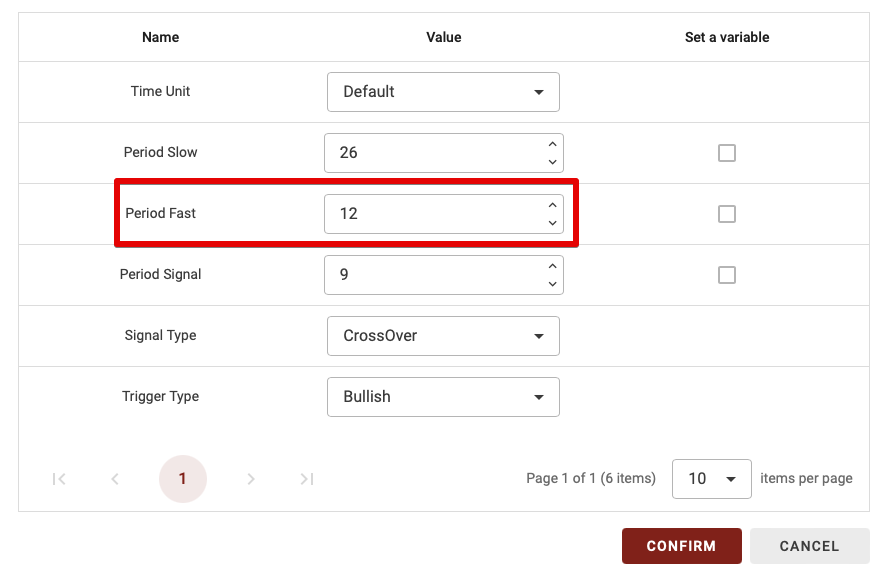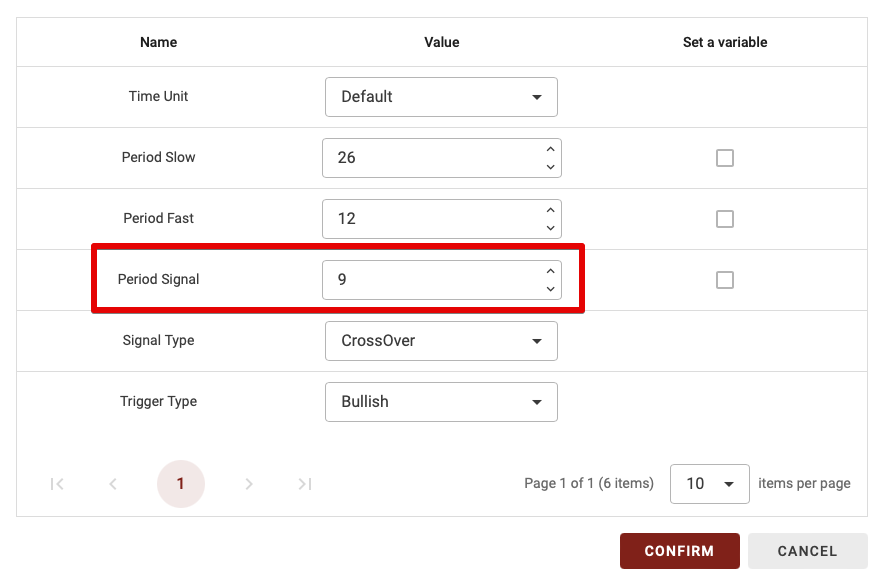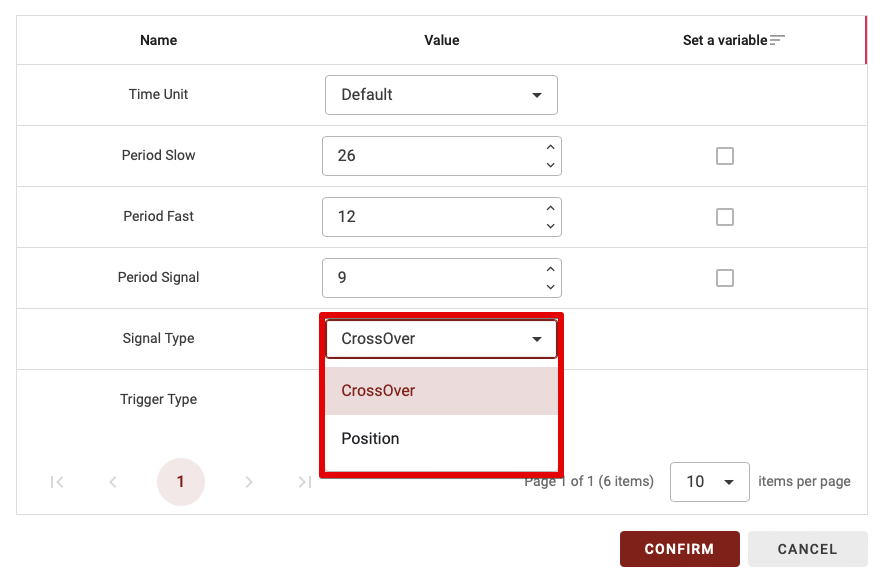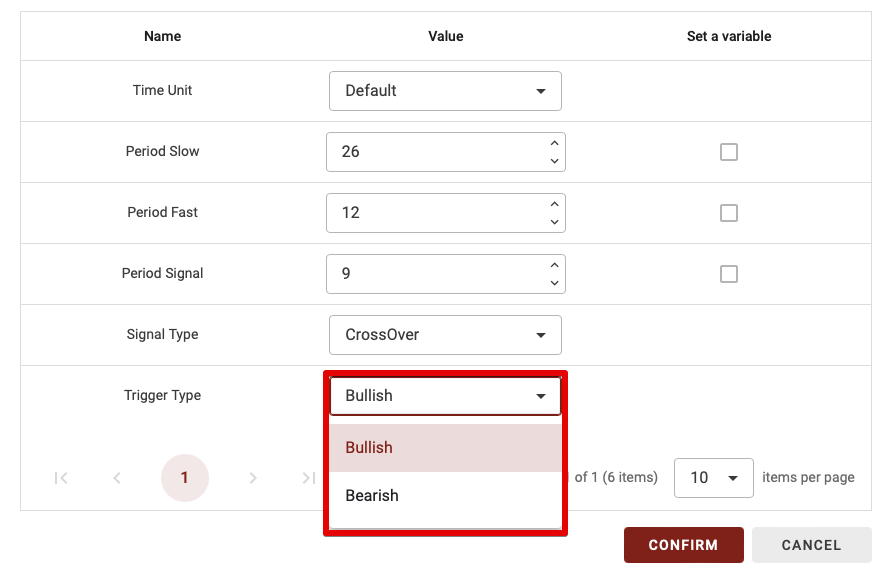Understanding the MACD indicator
The MACD (Mean Average Convergence Divergence) indicator is one of the classic indicators in a trader’s toolbox. It provides information on the strength, momentum and duration of a trend.
The indicator has 3 main components: the MACD line (difference between 2 moving averages), the Signal line (exponential average of the MACD line) and the histogram, which represents the difference between the MACD line and the Signal line.
MACD block configuration
On BullTrading, you can configure each block to make it unique. In this block, you can define the time unit, the period used, …
Time Unit

As Bulltrading is able to create a multi-frame strategy, you have the option of choosing the time period over which to calculate this indicator. You therefore have two options:
- Default: if you leave Default, the time unit will vary according to the time horizon you use in the backtest.
- 15m,30m,1d… : If you choose a specific time unit in the time unit, this means that you will choose this specific time unit whatever time unit you use to backtest your strategy.
TIP: If you’re a beginner, I advise you to leave the default time unit.
Period Slow
To create the MACD line, 2 moving averages are required. Thus, the slow period of the “Period Slow” parameter represents the period used to calculate the slow moving average required to calculate the MACD line.

Period Fast
This defines the period of the second moving average used to calculate the MACD line.

Period Signal
The Signal line is an exponential moving average of the MACD line. So, we need to choose the period we’re going to use for this moving average.

Signal Type
This parameter has only two possibilities: CrossOver and Position. Let’s explain the difference this parameter makes:
- CrossOver: if you choose CrossOver for the Signal type, this block will be enabled only when the MACD line passes below or above the Signal line.
- Position: with this option, the block will be validated as long as you are in the chosen trigger type (Bearish or Bullish).

TIPS: the CrossOver parameter is much more restrictive, so it’s worth using it when you only have one or two indicators combined. However, if you have too many blocks combined with the Crossover parameter, this will greatly reduce the number of trades in your strategy, as we need, for example, a crossover between the two MAs + a crossover between the RSI 70 threshold + a crossover in the Vortex indicator…
So, when combining several indicator blocks, don’t set more than 1 or 2 blocks with the CrossOvers parameter if you’re a beginner.
Trigger Type
This parameter has only two possibilities: Bullish or Bearish. Let’s explain the difference:
- Bullish: if you set the trigger type to bullish, the block is validated if the MACD line is above the Signal line.
- Bearish: if you define the trigger type as Bearish, the block is validated if the MACD line is below the Signal line.
